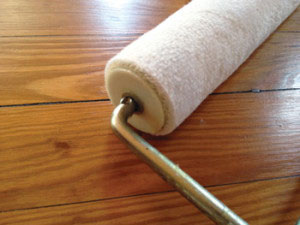Aug 16, 2013

Recommendations for Rolling Applications
Basic Coatings® routinely tests commonly used paint rollers to ensure compatibility with all Basic Coatings Waterbased Wood Floor Finishes. With good application methods, many different rollers will work with various finishes, but Basic Coatings has found the rollers listed below to perform best with all Basic Coatings Finishes. If you are looking for great results, take a look at our list of recommended rollers and procedures.
Recommended Paint Rollers for Basic Coatings Waterbased Finishes
- 5/16” Sherwin Williams® Microfiber
- 5/16” Wooster® Microfiber
- Note: Best results were found using rollers labeled for “Smooth Surfaces”.
For bare wood, apply two coats of a Basic Coatings Waterbased Sealer with a T-bar, roller, and/or paint pad per label instructions, abrade, and tack floor with Basic Coatings Squeaky™ Cleaner before applying a Basic Coatings Waterbased Finish. For screen and recoats, use a 120 grit screen or higher for final screen, for best results use a maroon pad (3M spp) with 240 grit Gold Strips, then tack floor with Basic Coatings Squeaky Cleaner before you apply the top coat.
To begin, use a paint pad to trim along the starting wall, pour a line across the floor boards about five to six inches wide, and condition the roller with finish. Place the roller past the line of finish and roll back through the finish in three to four foot sweeps, roll forward through the finish again feathering up at the end. Repeat this process in six to seven inch increments until the floor is completed. Rollers sliding or skipping is an indication of too much finish, roll excess finish out before continuing. Allow finish to dry 30 to 45 minutes before adding any airflow to prevent debris from collecting or skinning to occur. Finish will be ready for recoat in 3 to 4 hours depending on environmental conditions.
Basic Coatings recommendations have been fully tested at our application laboratory and shown to work under proper environmental conditions and sound application techniques. Recommendations are not to be considered warranty for misuse or improper application methods and should not be considered the only way to apply Basic Coatings Waterbased Finishes. For many years, Basic Coatings products have been applied with a variety of methods from T-bars and paint pads to spray, brushing and wipe-on application. Please contact a Basic Coatings Representative or consult basiccoatings.com for more information on application methods.